BTC iShares Core U.S. Aggregate Bond ETF
Latest BTC iShares Core U.S. Aggregate Bond ETF News and Updates
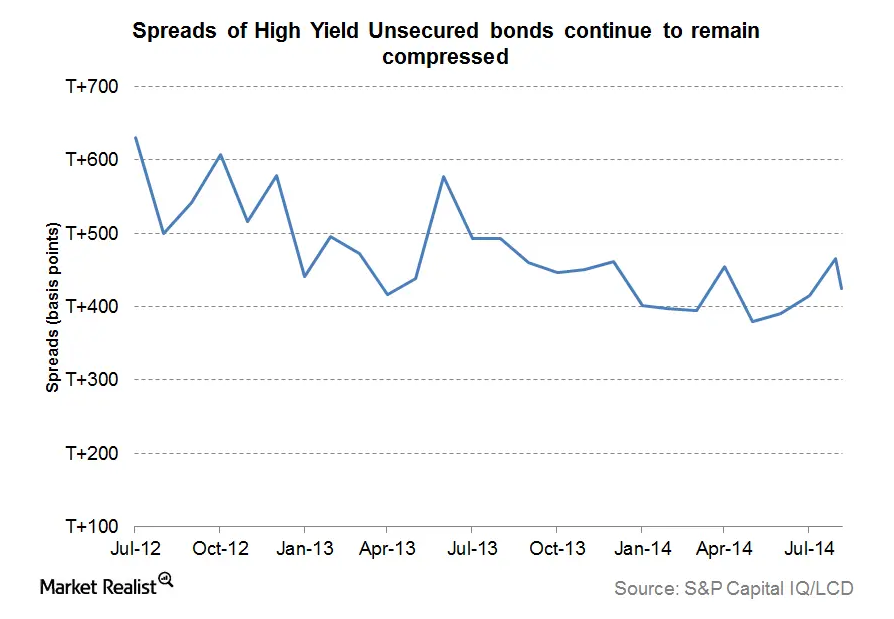
Why tight credit spreads usually mean a period of global expansion
Today, most measures of credit conditions are positive, with tight spreads across all of fixed income. Even high yield spreads have come in after a short scare last month.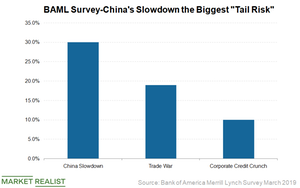
Markets Look at US-China Trade Talks as Slowdown Concerns Multiply
Today, another round of trade talks started in Beijing.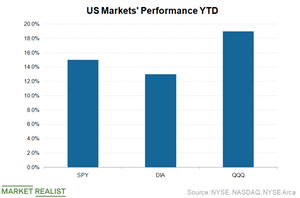
Strong Economy and a Rate Cut: Can Trump Have It Both Ways?
Today, President Donald Trump told reporters, “Our country’s doing unbelievably well economically.”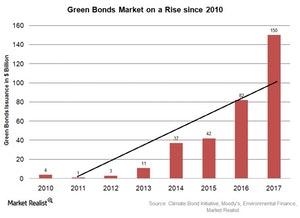
Green Bonds Issuance Show Signs of Growth in 2017
Green bonds carry the same risk-return profile as conventional bonds. However, these bonds fund projects focused on energy efficiency, clean water, transportation, biodiversity, and sustainable waste management.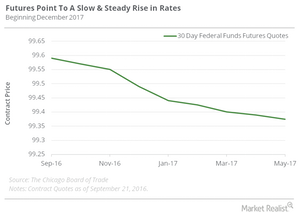
Ray Dalio: The Next Downturn May Be a Difficult One to Reverse
“The next downturn may be a difficult one for central banks to reverse,” warned Ray Dalio, CEO of the world’s largest hedge fund.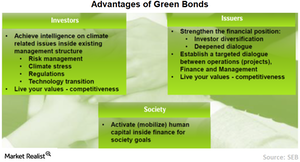
How Green Bonds Can Help Diversify Investor Base
Even if we assume that green bonds don’t offer any significant premium over conventional bonds, there are many who believe in other noteworthy advantages of green investing.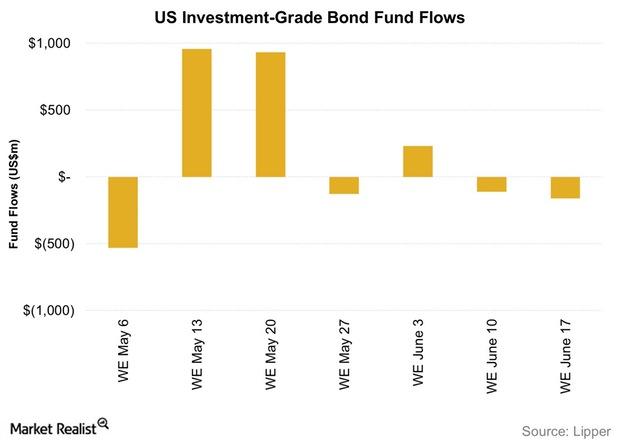
Investment-Grade Bond Funds Saw Outflows Last Week
Flows into investment-grade bond funds (LQD) were negative in the week ending June 17. This was the second consecutive week witnessing outflows.
Why To Expect Muted Returns from US Equities
We can expect muted returns from US equities going forward. US stocks face the prospect of higher interest rates, albeit gradual and from unusually low levels.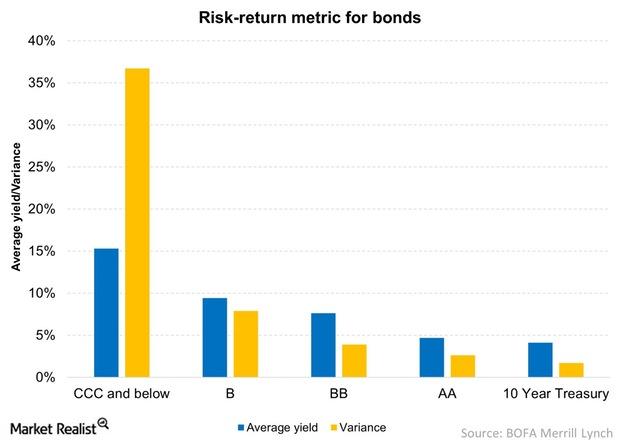
How Various Asset Classes Compare Using The Risk-Return Metric
The risk-return metric for ten-year Treasuries (IEF) are lowest, but also the safest, with a paltry 1.3% volatility and with an average yield of 4.1%.Financials How bond prices, interest rates, and credit spreads correlate
Bond prices and interest rates have an inverse relationship. If an interest rate increases, the price on a bond declines, and vice versa.Financials Why do floating rate notes, or FRNs, differ from regular bonds?
The U.S. Treasury Department’s latest issue on January 29, the floating rate note (or FRN) will fulfill two investor needs: participating in anticipated future interest rates increases and protecting principal against default.Financials Why investors should look at floating rate notes as an option
On January 29, 2014, the U.S. Treasury Department issued a new class of security: the floating rate note (or FRN). This is the first new security introduced by the Treasury since 1997.Financials Why credit upgrades and downgrades affect bond returns
A ratings upgrade or downgrade has a direct impact on fixed income yields, and therefore directly affects bond prices.Financials Why we need to relook at the consumer in this week’s releases
This week is full of indicators, with most of them being measures of national-level economic activity.Financials Key drivers affecting investment-grade bond funds flows
Bond yields and prices move in opposite directions. As a result, returns on high-quality corporate bonds were positive. This year, demand for U.S. investment-grade debt benefited from geopolitical tensions overseas and economic growth fears in the first quarter. This raised prices and lowered yields on high-quality corporate bonds.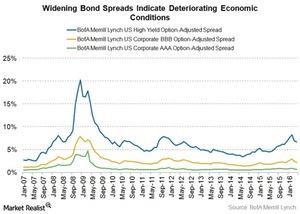
What Do Widening Bond Spreads Indicate?
Widening spreads indicate a slowing economy. Since companies are more likely to default in a slowing economy, credit risk related to their bonds rises.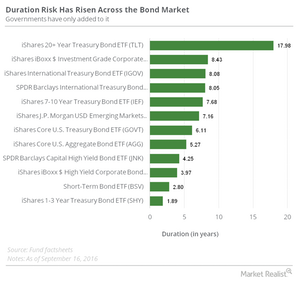
Investors Beware: Duration Risk Has Risen across the Bond Market
If you’re a bond (BSV) (AGG) investor or fund manager, fluctuation in interest rates is one of the key risk drivers for the returns you get from your portfolio.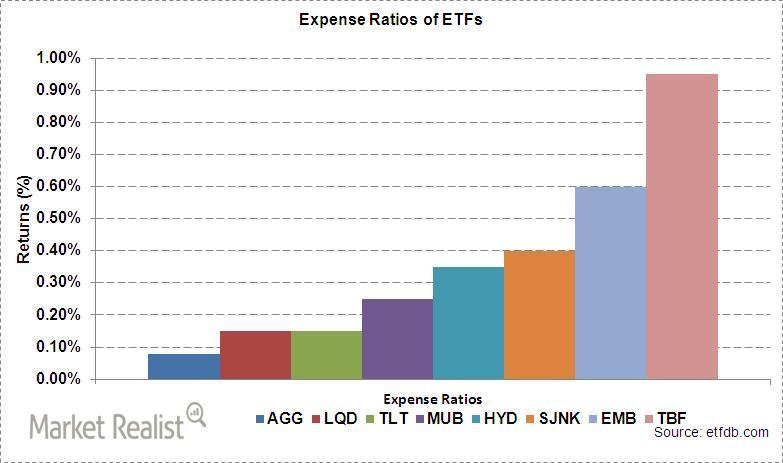
Must-know: Important costs involved in owning an ETF
Owning an ETF comes with some fees. These fees are called “expense ratios” because they’re expressed as a percentage of a fund’s assets.Financials Why expense ratios affect ETF investors’ returns
To see how expense ratios can affect investments over time, let’s compare the returns of several fixed income ETFs that differ only in expense ratio.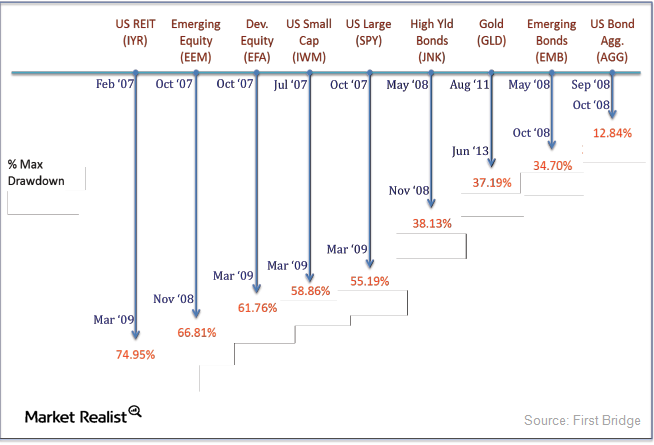
Must-know: Minimizing ETF losses by observing max drawdowns
In practice, asset owners (both retail and institutional) want to avoid significant portfolio drawdowns even if the benchmark index declines.Financials Must-know variants in developed market international bond funds
International bond funds like the Vanguard Total International Bond Index ETF (BNDX) can have various investment styles determined by their stated choice of bond investments.Financials Why do floating rate notes, or FRNs, differ from leveraged loans?
FRNs are usually issued in capital markets, whereas leveraged loans are arranged by commercial and investment banks. While FRNs are typically unsecured and investment-grade, leveraged loans are secured.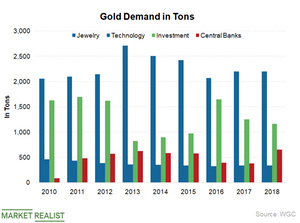
Central Banks Purchased the Most Gold in 50 Years in 2018
According to the gold demand trend released by the World Gold Council on January 31, annual gold demand increased by 4% in 2018.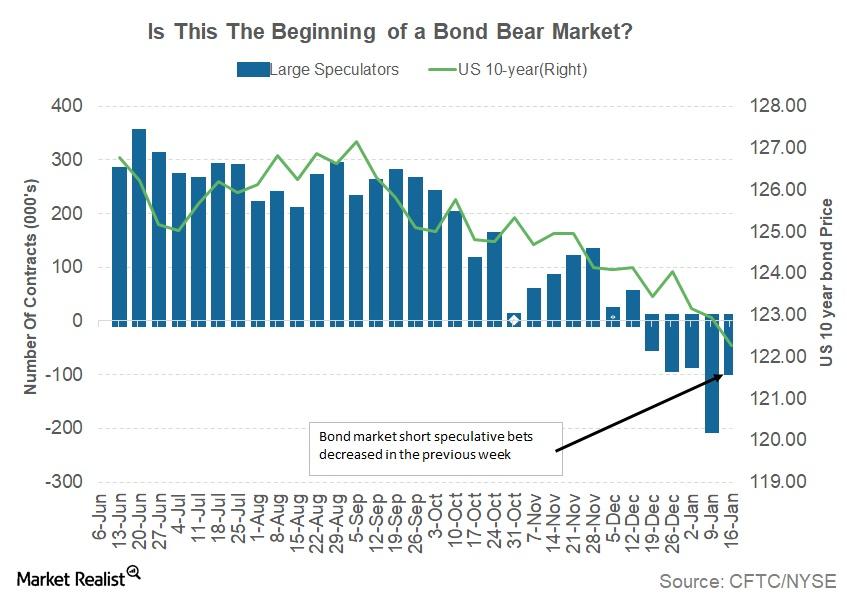
Are Bond Yields Set to Move Higher this Week?
The US Treasury is not able to issue any more debt until the debt ceiling is raised, which could increase the volatility in the bond markets.
Why the US Bond Market Moved Lower Last Week
The core CPI of 0.3% pushed the annual number up by 0.1% to 1.8%.
What Could Happen If China Wants Its Money Back?
If the Chinese government decides to sell its US debt (GOVT) holdings, it could lead to another possible global financial crisis.
What November Job Openings Say about US Economy
As per the January JOLTS report, there were 5.9 million job openings at the end of November.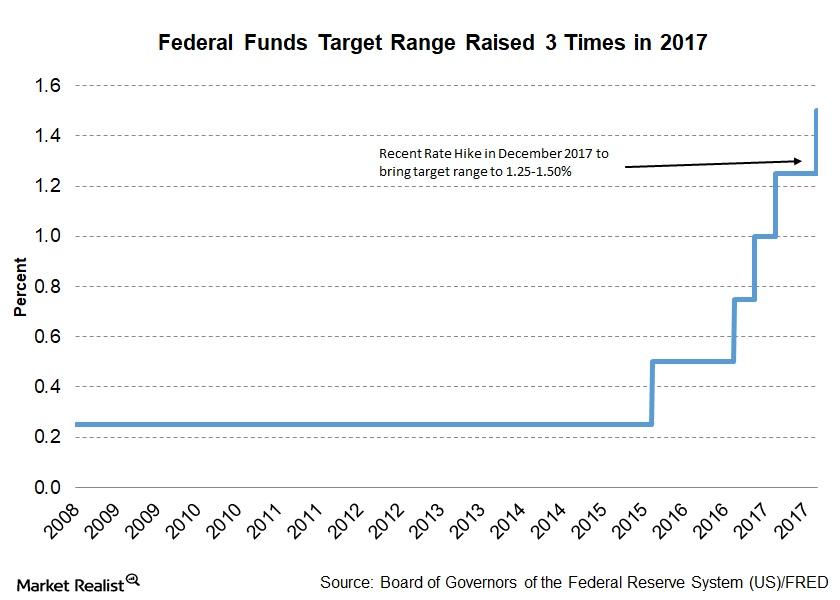
A Double Dose of Tightening from the Fed in 2017
In its December monetary policy statement, the Fed projected three interest rate hikes in 2018 and three in 2019, depending on the incoming economic data.
Assessing the Risk of a Flattening Yield Curve
St. Louis Fed president and CEO James Bullard gave a presentation at a regional economic briefing on December 1. Throughout this series, we’ll analyze Bullard’s take on the risks of an inverted yield curve.
How Will Tax Cuts Impact the Federal Deficit?
The report from the Joint Committee on Taxation included an estimate of budgetary deficits for 2018–2027. Tax reforms could have a limited impact in 2018.
Fed’s November Beige Book and Restrained Hiring Plans
The inability of employers to find suitable workers is leading to wage increases, especially in the professional, technical (XLK), and production (XLI) sectors.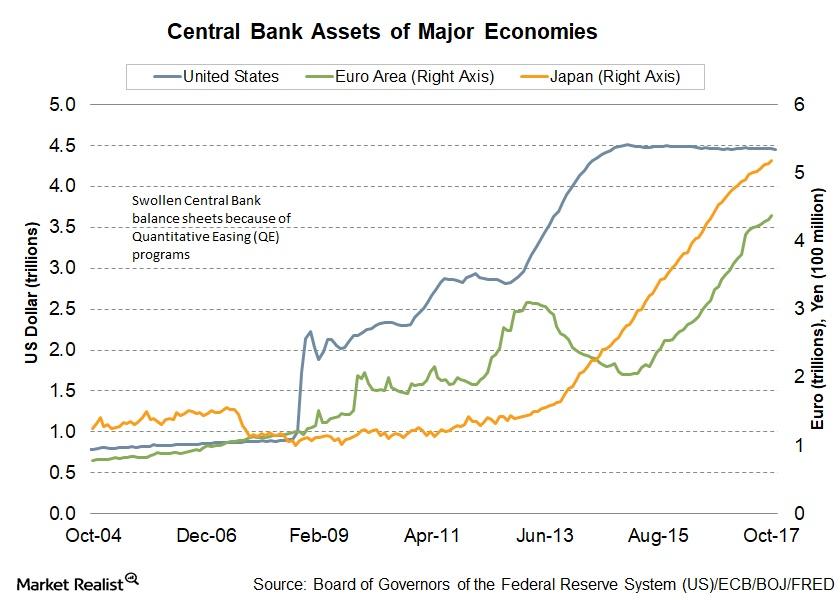
When the United States Sneezes, Will the World Catch a Cold?
Williams suggested that the monetary policy framework should be designed considering the global scenario rather than central banks looking at their economies in isolation.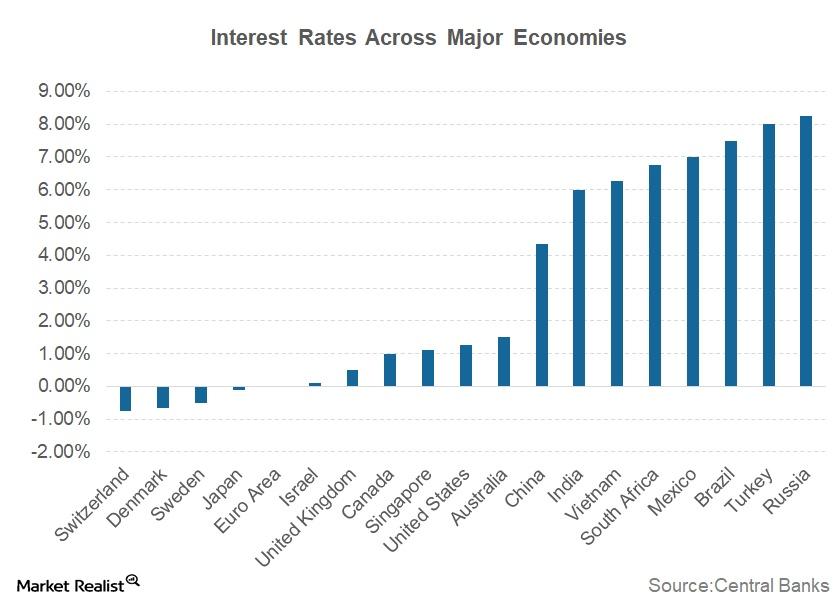
The Problem with the Current Interest Rates
With global economies progressing toward normalcy or the “new normal,” as Williams called it, central banks are moving toward normalizing policy by signaling interest rate hikes.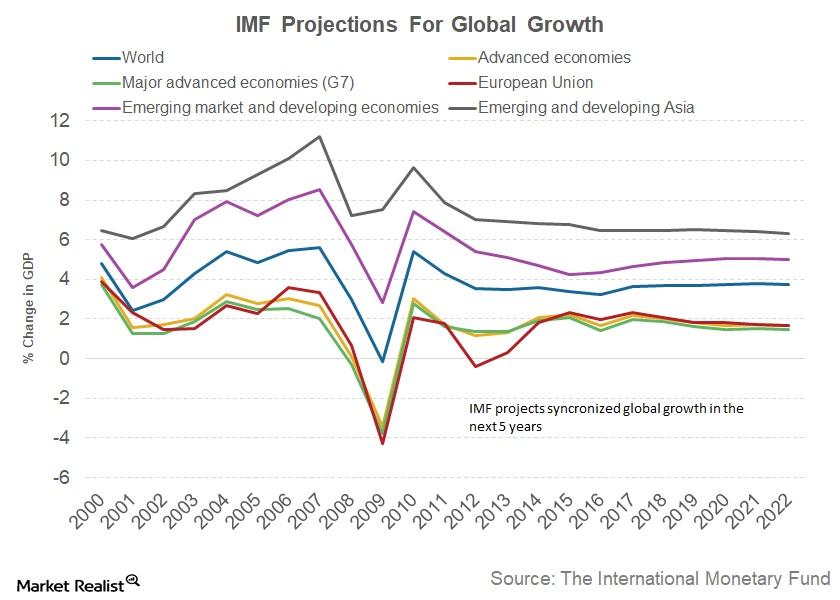
San Francisco Fed John Williams and Monetary Policy Challenges
John Williams, president and CEO of the Federal Reserve Bank of San Francisco, spoke on November 16, 2017, at the 2017 Asia Economic Policy Conference in San Francisco.
Did Job Openings Rise in September?
The Job Openings and Labor Turnover Survey (or JOLTS) report for September came out on November 7. Job openings remained unchanged at 6.1 million as of the last business day in September.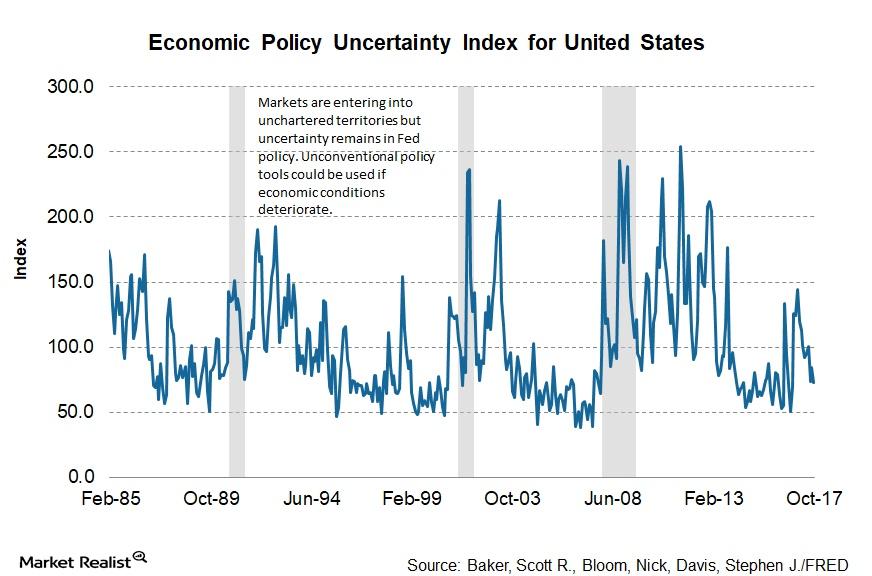
Janet Yellen: A Key Question for the Future
In a speech at the 2017 Herbert Stein Memorial Lecture, Fed Chair Janet Yellen shared her thoughts on monetary policy for the future and discussed whether there will be any role for unconventional policy again.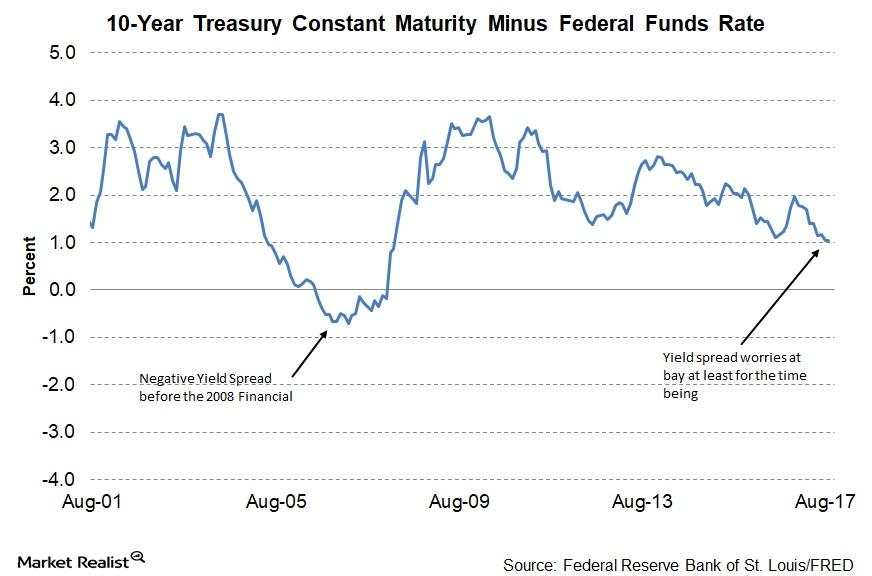
Are Declining Yield Spread Worries Done for Now?
At the last FOMC (Federal Open Market Committee) meeting on September 20, 2017, Fed members decided to initiate a balance sheet normalization process starting in October.
A Double Blow for Bond Markets?
The announcement of the GOP tax reform plan added to the pressure on bond markets.
ADP Jobs Data Dragged Lower by Hurricanes in September
As per the September ADP National Employment Report, the US private sector added 135,000 jobs during the month. The figure is a sharp decrease from 228,000 in August.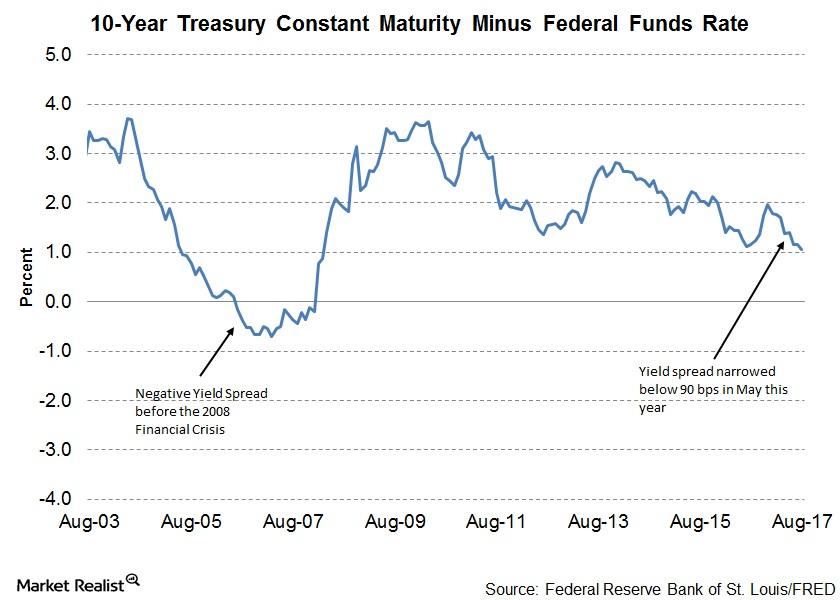
How Credit Spreads May React to the Fed’s September Statement
Another rate hike in 2017 The FOMC’s (Federal Open Market Committee) meeting on September 20 changed the outlook for bond markets (BND). It suggested that the Fed could be looking at another rate hike by the end of this year, along with a balance sheet unwinding program. Gains in August inflation (TIP) boosted Fed members’ […]
Will US Bond Yields Rally after the FOMC Statement?
The bond markets are the most impacted asset class by any changes to the Federal interest rates.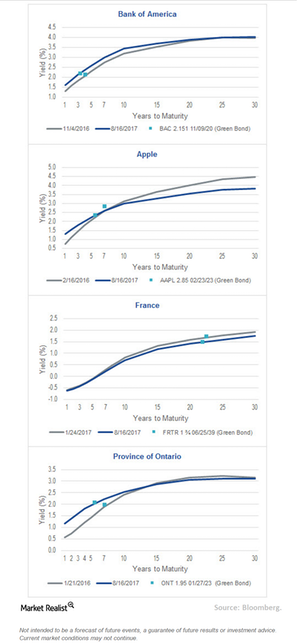
Does the Green Bond Premium Exist?
Despite the rapid rise in issuance, demand for green bonds continues to outshine supply. The excess demand for green bonds has led to higher returns.
The Bond Market’s Reaction to New Rate Hike Hopes
After three weeks of continuous falls, US bond yields rose in the week of September 10. The benchmark ten-year US Treasury yield (BSV) rose by 10 basis points to 2.20% but remains far from the December 2016 high of 2.64%.
Understanding the Ups and Downs of the US Dollar
The US dollar has been on a roller coaster ride over the last ten trading sessions. The US dollar (UUP) index hit a low of 90.99 on September 8.
Why Interest Rate Spreads Are Growing
Reduced odds for another rate hike in 2017 Fears of flattening yield curves and rising interest rates have completely vanished in recent weeks. The FOMC’s (Federal Open Market Committee) July meeting statement confirmed the concerns about lagging inflation (TIP), making another rate hike in 2017 less likely. Focus has turned to the Fed’s balance sheet reduction […]
Can There Really Be a Bubble in the Bond Market?
Fundamentally, bonds (AGG) are a discount instrument and are generally never expected to be in a bubble. Let’s see why that’s the case.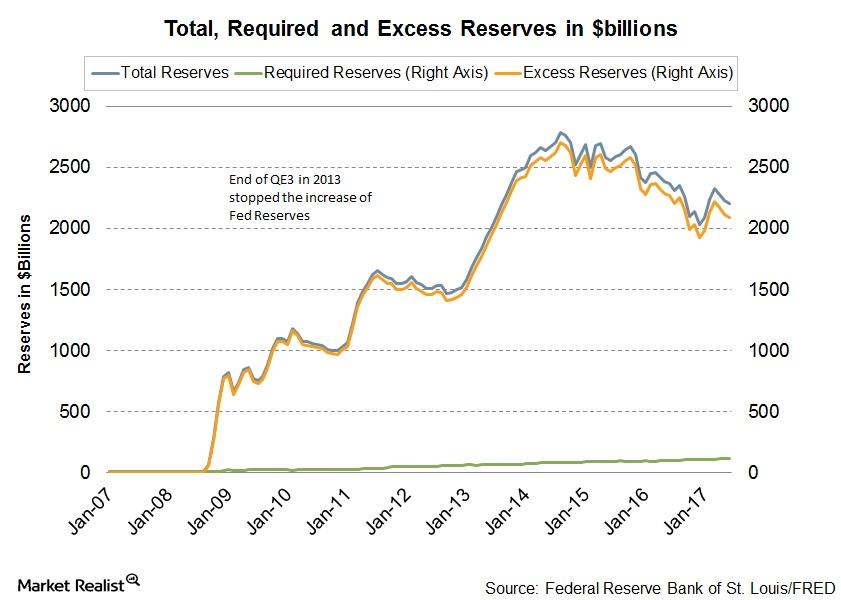
Will Market Shocks Really Be Minimal to Balance Sheet Unwinding?
In its June policy meeting, the Fed has signaled that it will stop replacing maturing securities and slowly reduce the size of its balance sheet.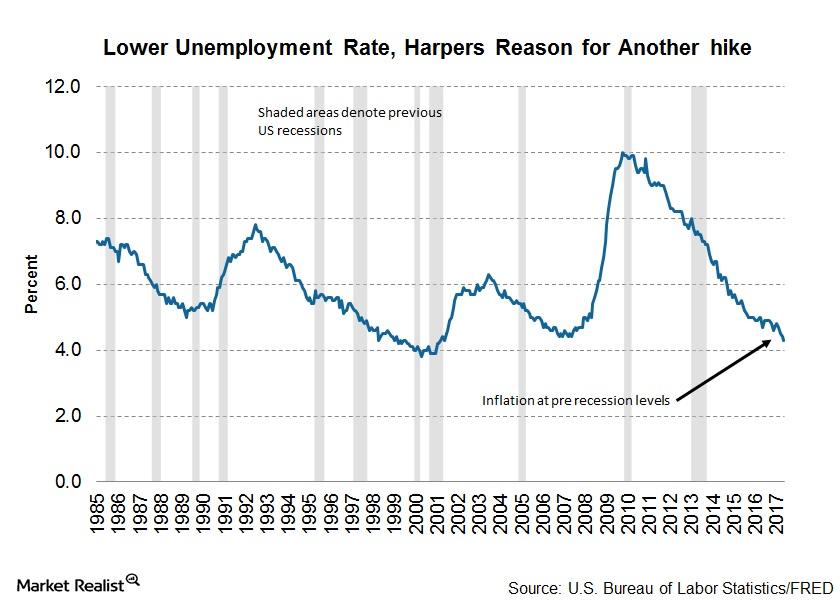
Why Minneapolis’s Fed President Voted Against a Rate Hike
In an essay published by Minneapolis’s Federal Reserve president, Neel Kashkari, after he voted against a rate hike in the Federal Open Market Committee’s (or FOMC) June 2017 meeting, he explained why he dissented.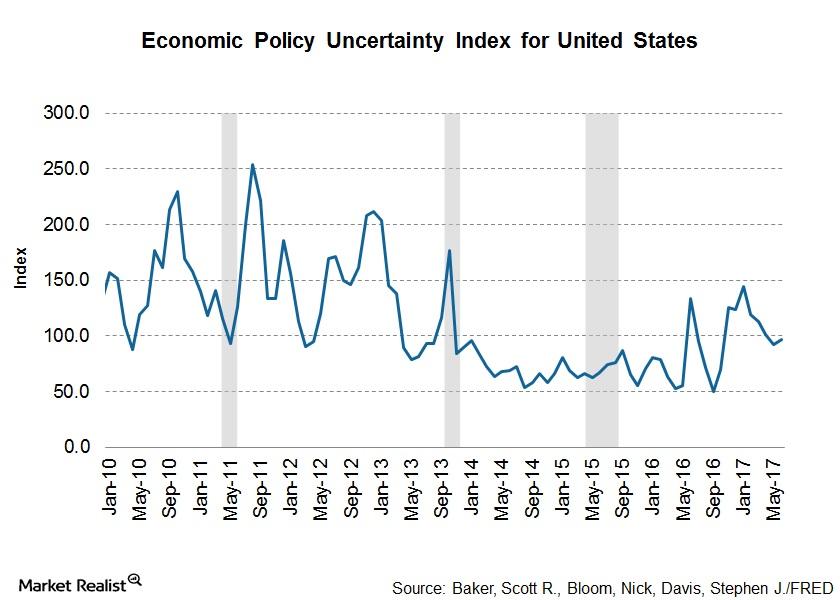
Dallas’s Kaplan Discusses the Biggest Headwind for the US Economy
Dallas’s Federal Reserve president, Robert S. Kaplan, said that the rebound in the US economy is likely to continue for the rest of 2017.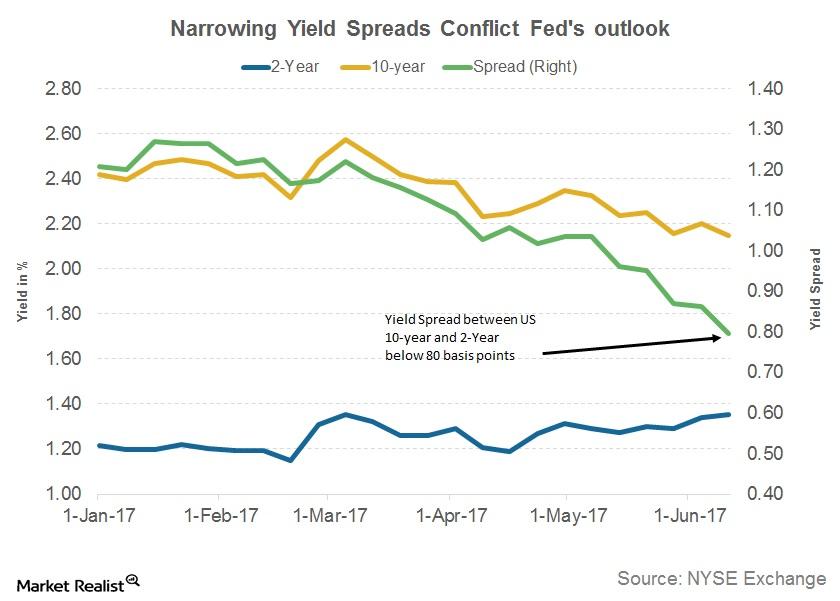
Why NY’s Fed President Doesn’t Feel a Flattening Yield Curve Is Negative
New York’s Federal Reserve president, William C. Dudley, recently spoke at a business forum in New York and said that he was pleased with the current state of the US economy.
